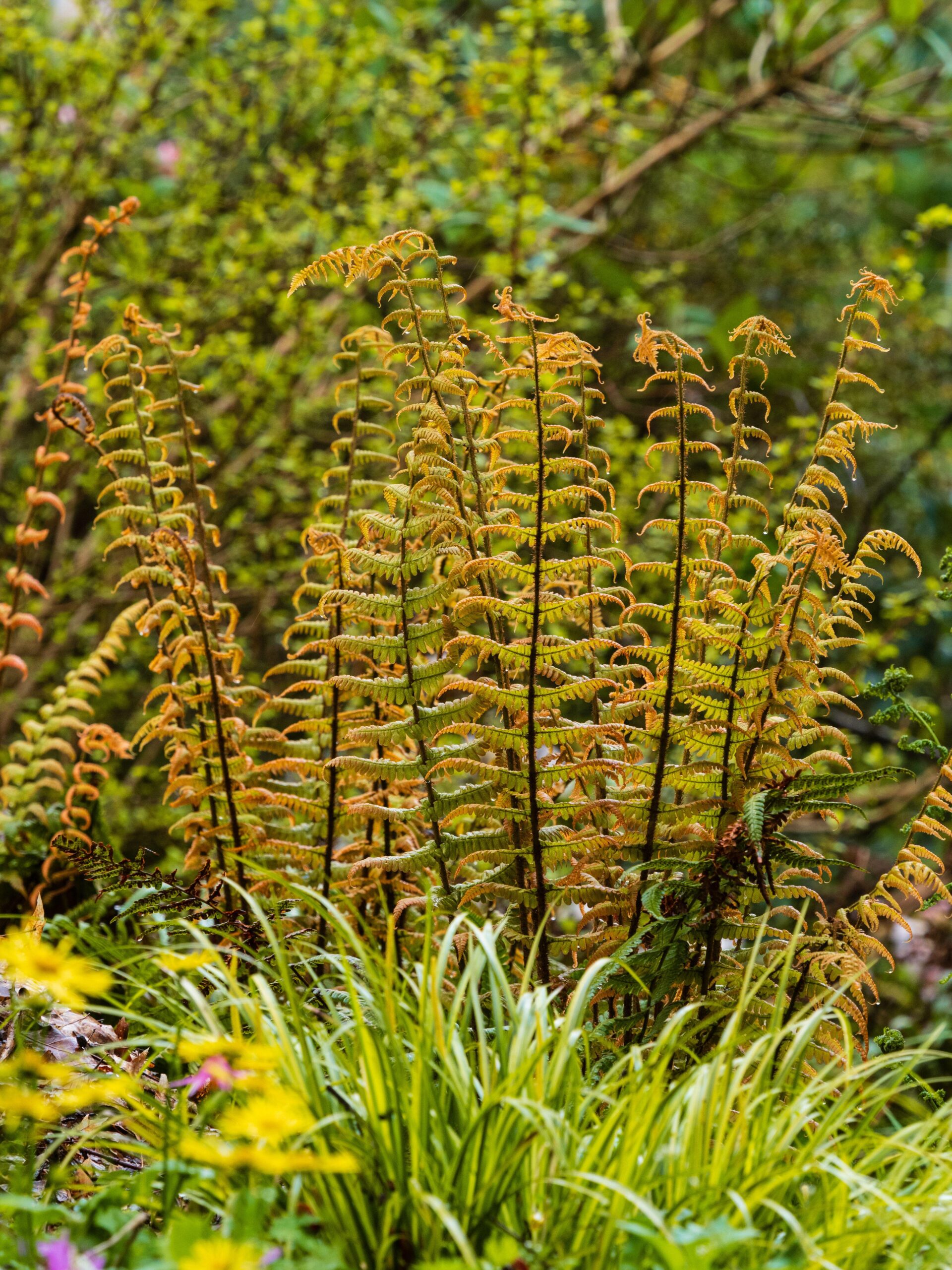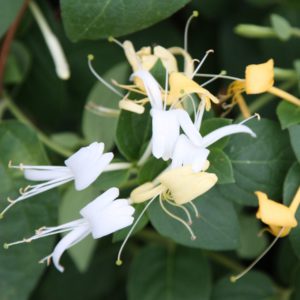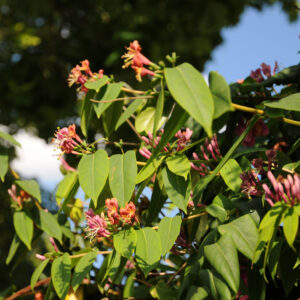Dryopteris ‘Jurassic gold’
€17.50
Frequently Bought Together



Description
Dryopteris wallichiana ‘Jurassic Gold’ (Wallich’s Wood Fern)
Quick Facts
- Common Name: Wallich’s Wood Fern, Jurassic Gold Fern, Alpine Wood Fern
- Botanical Name: Dryopteris wallichiana ‘Jurassic Gold’
- Plant Type: Deciduous fern
- Mature Height: 80-120cm
- Mature Spread: 80-100cm
- Flowering Period: Non-flowering (spores produced June-September)
- Flower Colour: N/A (fern)
- Foliage: Large, golden-green fronds with distinctive black stems
- Hardiness: RHS H6 (hardy throughout UK and Ireland)
- Soil Requirements: Moist, well-drained, humus-rich soil
- Aspect: Partial to full shade
- Maintenance: Low
Description
Like ancient treasures unearthed from a primeval forest, Dryopteris wallichiana ‘Jurassic Gold’ brings prehistoric grandeur to Irish gardens with its magnificent golden-green fronds that seem to glow with inner light against dramatic black stems. This spectacular fern transforms shaded corners into enchanted grottos, where each unfurling crozier creates a sense of ancient mystery and timeless beauty that captivates throughout the growing season.
The plant’s architectural form commands attention with its bold, upright shuttlecock of deeply divided fronds that can reach impressive proportions, creating a fountain-like display of textural beauty. The striking contrast between the golden-green foliage and the glossy black rachis (stem) creates a dramatic visual impact that few other shade plants can match, whilst the fronds’ substantial presence adds structure and movement to woodland plantings.
Named to evoke the golden age of ferns during the Jurassic period, this cultivar certainly lives up to its dramatic moniker, establishing magnificent clumps that become more impressive with each passing year. In Ireland’s temperate climate, this hardy fern thrives in the moist, shaded conditions found beneath trees and in woodland gardens, bringing exotic beauty to those challenging spots where many flowering plants struggle.
In Irish garden design, ‘Jurassic Gold’ pairs magnificently with hostas, astilbes, and other shade-loving perennials, creates stunning contrasts with dark-leaved heucheras and coral bells, and complements spring bulbs like bluebells and wood anemones. Its architectural presence makes it perfect for contemporary shade gardens, whilst its prehistoric charm suits naturalistic woodland settings beautifully.
Caragh Garden Notebook
Plant in spring or early autumn, spacing 80-100cm apart in moisture-retentive, humus-rich soil enriched with well-rotted leaf mould or compost. In Ireland’s climate, choose a position in partial to full shade, protected from strong winds which can damage the large fronds. Avoid deep, dry shade where growth may be compromised.
Thrives in pH 6.0-7.5 and requires consistent moisture throughout the growing season, particularly during dry spells. Mulch annually with organic matter such as leaf mould, bark chips, or compost to retain moisture and suppress weeds. Container cultivation is possible using a soil-based compost with added organic matter, ensuring containers never dry out.
Remove old, damaged, or yellowing fronds throughout the growing season to maintain appearance and plant health. Cut back all fronds to ground level in late autumn or early spring before new growth begins. The emerging croziers are particularly vulnerable to late frosts, so delay cutting back until danger has passed.
Divide established clumps every 4-5 years in early spring just as new growth begins, ensuring each division has both roots and growing points. Water newly planted divisions regularly until established. Feed annually in spring with a balanced, slow-release fertiliser to encourage vigorous growth.
Watch for slug and snail damage on emerging fronds in spring, and ensure adequate moisture during summer months to prevent frond scorch. In exposed locations, provide wind protection to prevent frond damage, and consider staking in very windy gardens until the plant becomes fully established.
The plant is remarkably low-maintenance once established, requiring little more than adequate moisture and annual tidying to maintain its spectacular appearance throughout the growing season.





